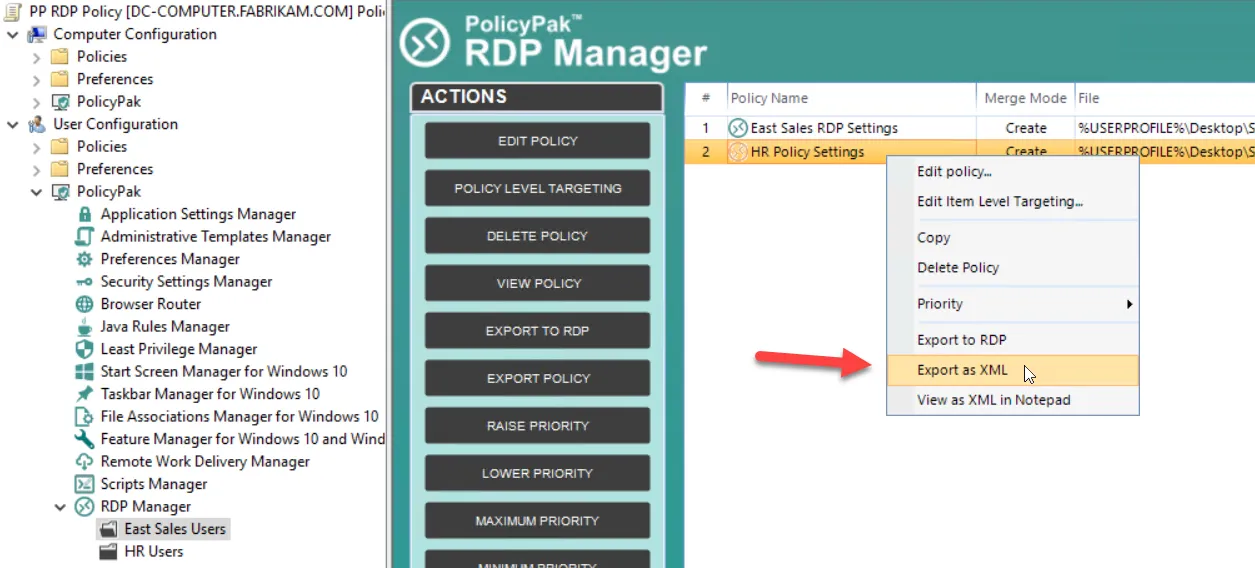Understanding Processing Order and Precedence
Within a particular GPO (Computer or User side), the processing order is counted in numerical order. So lower-numbered collections attempt to process first, and higher-numbered collections attempt to process last. Then, within any collection, each policy is processed in numerical order from lowest to highest.


Merging and Conflicts
Endpoint Policy Manager File Associations Manager will merge all GPOs (or non-Group Policy methods) and collections, unless there is a conflict. This is especially important because, instead of having one flat file that everyone must use and agree upon, you can distribute the directives across Endpoint Policy Manager collections or GPOs. Then, everything that doesn't conflict will merge perfectly.
For example, let's consider that you have two GPOs (or collections) that look like the following:
GPO1/Collection1: "TXT -> Notepad.exe", "LOG -> Notepad.exe"GPO2/Collection2: "TXT -> Sublime.exe", "CFG -> Sublime.exe"
Assuming GPO 2 or Collection 2 is processed last (based upon natural GP precedence), the result will be the following association list:
TXT -> Sublime.exe(because GPO2 "wins" in the conflict)LOG -> Notepad.exe(because there are no conflicts)CFG -> Sublime.exe(because there are no conflicts)
Precedence
Policies can be delivered by Group Policy and non-Group Policy methods such as Microsoft Endpoint Manager (SCCM and Intune) via Endpoint Policy Manager Exporter or Endpoint Policy Manager Cloud. As such, the Endpoint Policy Manager engine needs to make a final determination whether there is any overlap of policies. Here is how the precedence works:
- Policies delivered through Endpoint Policy Manager Cloud have the lowest precedence.
- Policies delivered through Endpoint Policy Manager files have the next highest precedence.
- Policies delivered through Endpoint Policy Manager Group Policy directives have the highest precedence.